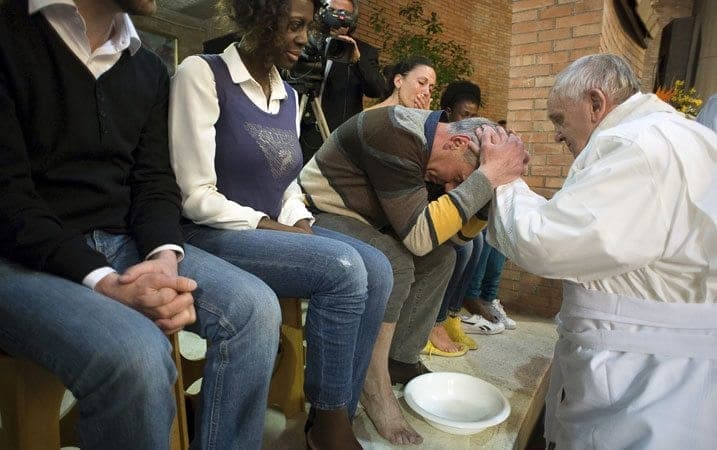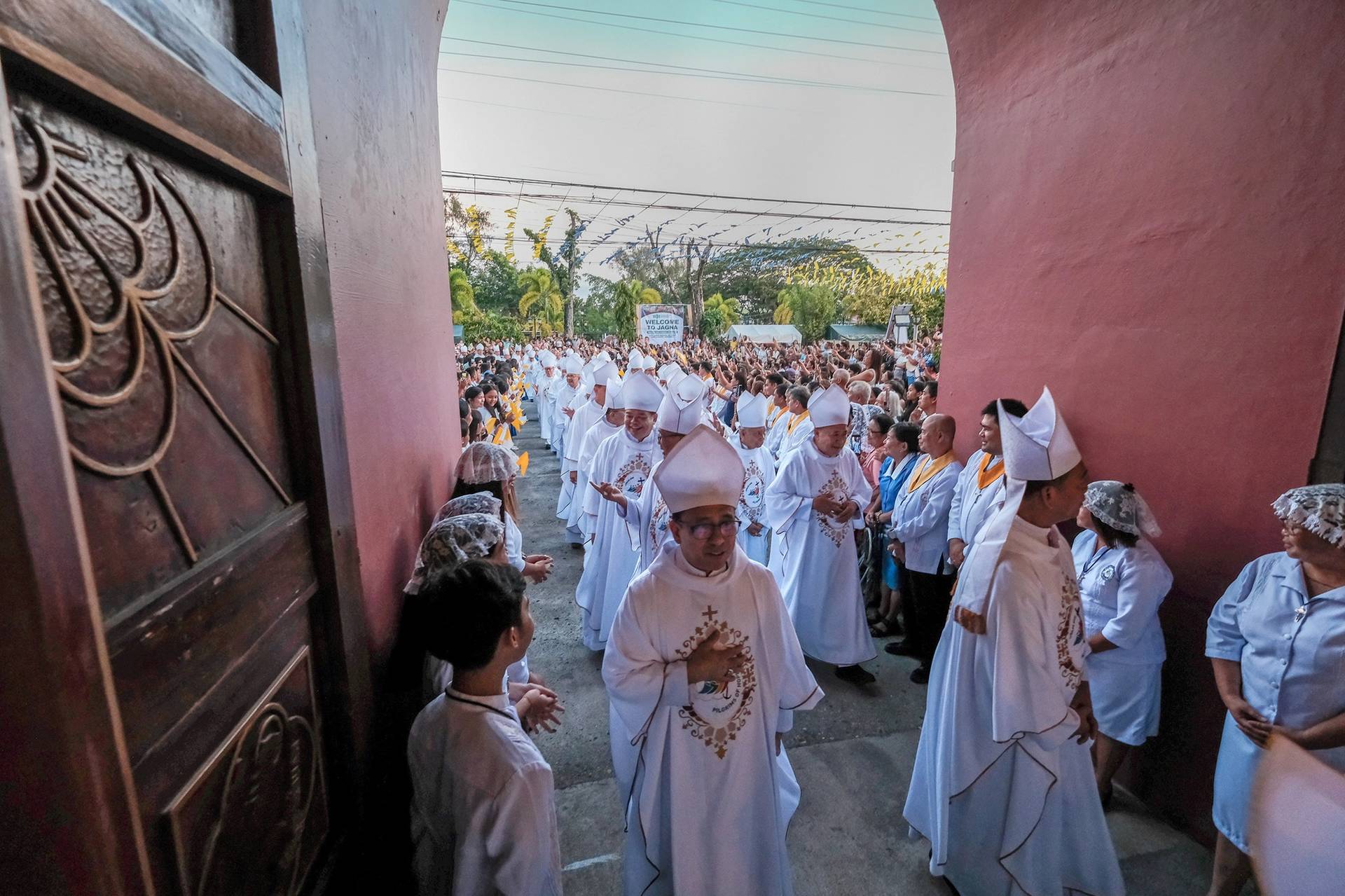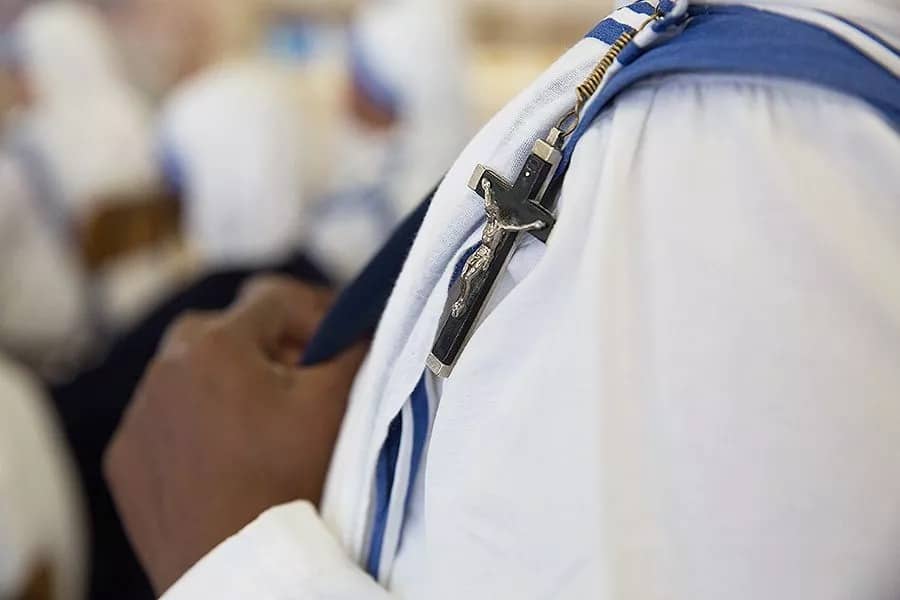ROME — Pope Francis has issued a decree revising the rules for the traditional foot-washing ritual on Holy Thursday, saying the rite should no longer be limited to men and boys, but also include women and young girls.
Those participating in the ceremony, the decree says, should be representative of the entire community.
The change, Francis wrote, is “an attempt to improve the method of implementation, to express the full meaning of the gesture performed by Jesus at the Last Supper, his gift of himself ‘to the end’ for the salvation of the world, his boundless charity.”
The decree is signed by Cardinal Robert Sarah of Guinea, prefect of the Vatican’s Congregation for Divine Worship and the Discipline of the Sacraments, but it was released Thursday with an accompanying letter from Francis requesting the change.
“After careful consideration, I came to the decision to make a change in the rubrics of the Roman Missal,” Francis wrote to Sarah. The Roman Missal is the central collection of prayers and other texts for use in Catholic worship.
“It’s recommended also that those chosen receive an adequate explanation of the meaning of the rite itself,” Francis wrote in a letter signed Dec. 20, 2014.
Sarah then prepared the decree, which is valid starting Jan. 6, meaning it can be applied for this year’s Holy Thursday services on March 24.
According to the decree, the instructions in the Roman Missal for the Holy Thursday service will be revised. The current wording says, “The men pre-chosen are accompanied by the ministers.” As of Jan. 6, the language will be, “The pre-chosen among the people of God are accompanied by the ministers.”
The Argentinian pontiff has already modeled this change in his own personal practice. In each of the past three years, he has included at least one woman in his Holy Thursday foot-washing ritual, and sometimes even non-Catholics.
On the first Holy Thursday after his election, Francis washed the feet of 12 young people, two of them women, and two of them Muslim, while he celebrated Mass at Rome’s juvenile detention center, Casal del Marmo.
In 2014, Francis visited Don Gnocchi, a center for the elderly and disabled. On that occasion, the participants in the foot-washing ritual ranged in age from 16 to 86, and several were in wheelchairs with their feet swollen or disfigured. Four of them were women.
In practice, many parishes around the world have been including women in the Holy Thursday rite for years, but the change introduced by Francis now makes the practice official.
“I don’t see it so much as a major change, but as a clarification of a liturgical question which has been taught with ambiguity for many years,” said Monsignor James Moroney, rector of St. John’s Seminary in Boston.
Moroney previously served as the US bishops’ chief staff official on liturgical matters, and is still the executive secretary of the Vox Clara Committee, an international panel that advises the Vatican on the English translation of the liturgy.
In the United States in particular, Moroney said, the decree will have little practical impact.
In 1987, the chairman of the US bishops’ Committee on the Liturgy said that the Latin phrase viri selecti in the Roman Missal, which means “pre-chosen men,” can be taken to mean both men and women, “in recognition of the service that should be given by all the faithful to the Church and to the world.”
The website of the United States Conference of Catholic Bishops says that including both men and women is intended to emphasize service along with charity.
It’s “an understandable way of accentuating the evangelical command of the Lord, ‘who came to serve and not to be served,’ that all members of the Church must serve one another in love,” the site says.
Moroney told Crux that this flexibility has been applied by many bishops throughout the United States, and was never overruled by the Vatican congregation that issued the new decree. On the contrary, he said, in many private exchanges over the years, the congregation told bishops that they were free to interpret the language of the Missal as “chosen people” rather than “chosen men”.
Moroney agreed that some may try to turn this into a political fight, but he said that’s the wrong way to look at it.
“It’s not about making political points or winning ideological battles,” he said. “It’s about knowing that the only way we will ever win is if we choose to follow Christ.”
“Pope Francis, like every pope back to Peter, has determined the form that the liturgy should take, and it has taken many forms throughout history,” Moroney said. The choice made by Francis, he said, “should be embraced and accepted with obedience and humility.”
Monsignor Richard Hilgartner, another former chief staff official on liturgy for the US bishops and today the president of the National Association of Pastoral Musicians, called the decree “long overdue.”
Hilgartner said it emphasizes that the foot-washing ritual is about “charity and humble service symbolized in the one who washes feet,” rather than “a gesture symbolizing the ordination of those whose feet are washed.”
Some tradition-minded Catholics may be alarmed about the move, since Holy Thursday has long been seen as commemorating the institution of the ordained priesthood by Jesus Christ. That’s why, for instance, popes traditionally issue an annual letter to priests around the world on Holy Thursday.
As a result, some may wonder if Francis’ decree on the foot-washing ritual signals a softening of the ban on women priests. On several occasions, however, Francis has said “that door is closed,” and has also objected to the prospect of “clericalizing” women’s roles in the Church.















